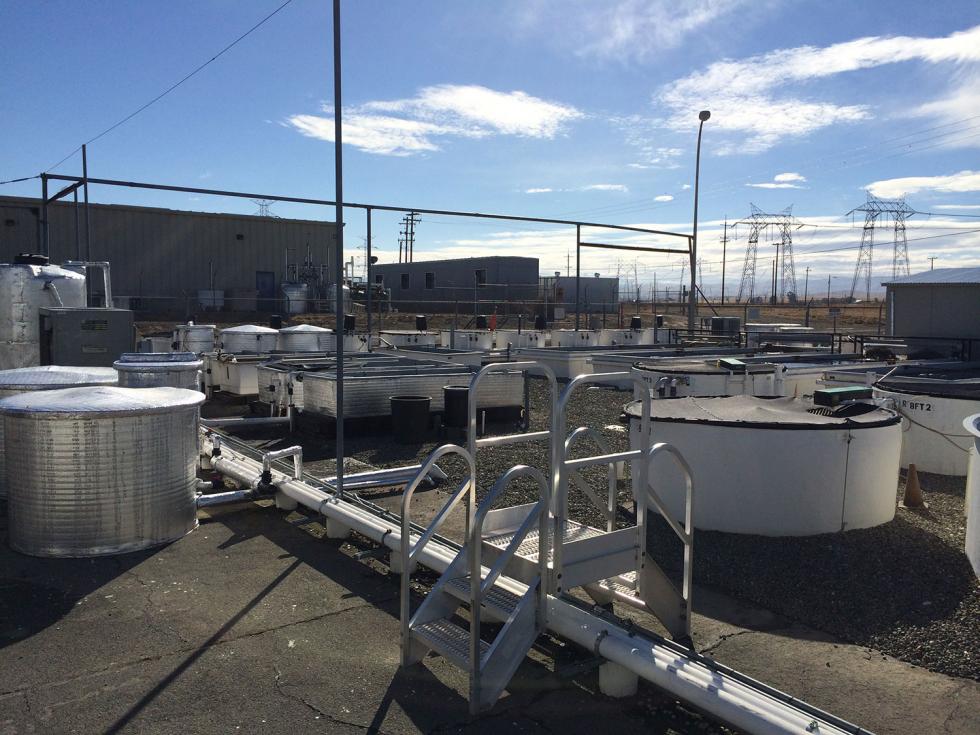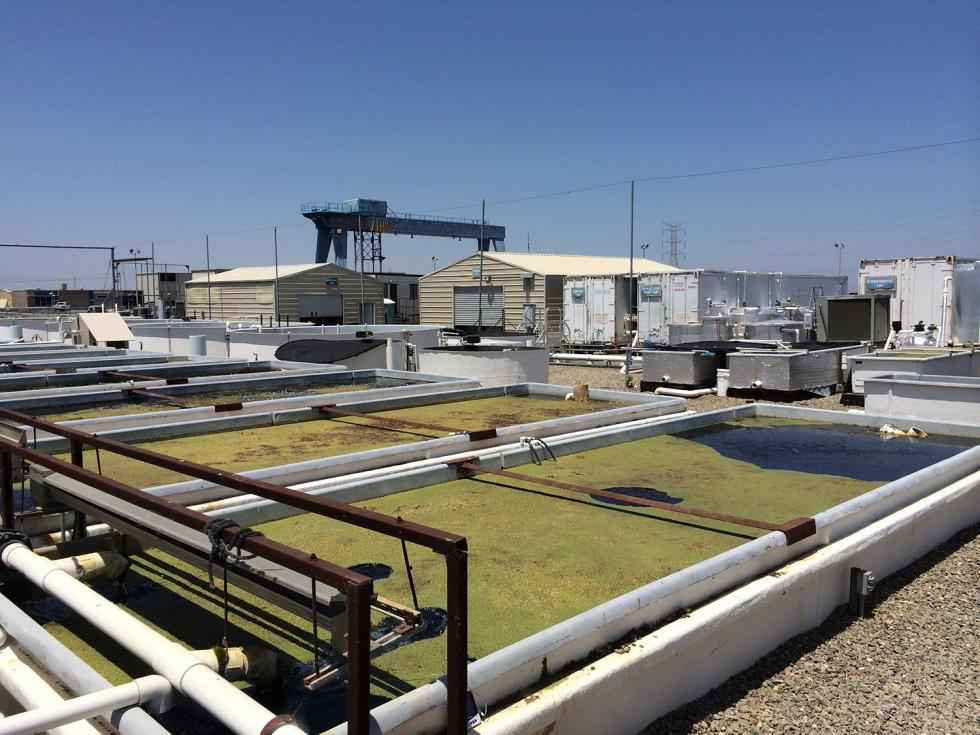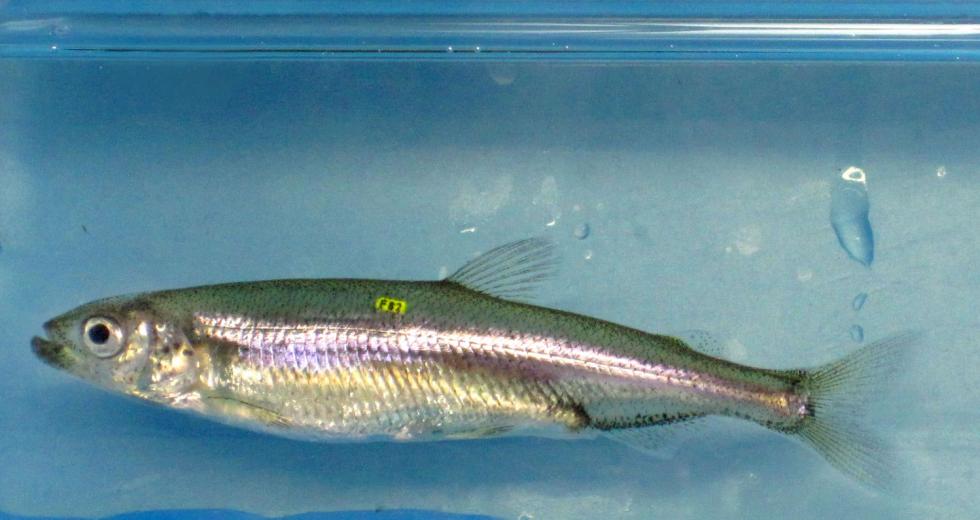The Delta smelt, for years a central figure in discussions about the environment, farming and the fight for water, may finally be at the gates of extinction. Its habitat has been so upturned by agricultural and industrial activity that the species — listed as endangered since 2009 — could easily slip past the brink within the next year, according to scientists.
But regardless of what happens in the ailing ecosystem of the Sacramento-San Joaquin Delta, where poor water quality and diminishing downstream flows have fueled the decline of at least a half dozen fish species, the Delta smelt will not vanish entirely — at least not any time soon. The species is being kept alive in a remote UC Davis laboratory in the southern Delta, where thousands of the fish are being bred and fed in tanks of re-circulating water. The director of the Fish Conservation and Culture Laboratory, Tien-Chieh Hung, says the facility’s fish could serve as a sort of seed bank for repopulating the wild population, should conditions in the Delta ever improve.
The Fish Conservation and Culture Laboratory, which has secured about $10 million in funding for the next four years, is maintaining its own self-sustaining population of the little fish. Still, to supplement the genetic diversity of the captive group, the lab’s team has been capturing a small number of wild Delta smelt every year and adding them to the collection. The addition of these individuals helps bolster the collection’s genetic diversity and reduce the risk of inbreeding.
UC Davis Fish Conservation and Culture Lab
(Photo: Courtesy of UC Davis)

The Delta smelt, once probably the most abundant species in the Delta, is now one of the rarest. Though the fish is not as socially, economically or recreationally important as the Chinook salmon, the white sturgeon or the striped bass, its decline is especially troubling. That’s because the Delta smelt spends its entire life cycle(usually just one year)within the Delta. They are not fished or harvested, meaning the species’ crashing population is a clear indicator of environmental problems.
To many scientists, it’s clear what the problem is: Farmers and municipal water agencies that rely on the Delta’s freshwater are not leaving enough for the ecosystem. When too much is pumped from the system, saltwater may encroach into the Delta, upsetting the estuary’s natural dynamics. The giant pumps themselves, which draw water into the San Joaquin Valley and toward the East Bay, have also directly killed millions of small fish.
For the smelt, which has been ruthlessly belittled by farm groups who scoff at efforts to protect the estuary, there may be little hope.
“The numbers [of Delta smelt] are now so low that the probability of them going extinct in the next year or so is pretty high,” says Peter Moyle, a fisheries biologist at UC Davis.
Annual drag-net fish surveys, in which the California Department of Fish and Wildlife usually finds anywhere from several dozen to several hundred Delta smelt, turned up just several fish last fall and just one in April.
UC Davis Fish Conservation and Culture Lab
(Photo: Courtesy of UC Davis)

Hung says it was once an easy one-day job to capture the 100 wild Delta smelt that he and colleagues add to their collection each year. “But in December it took us six trips just to get 60,” he says.
For years, Delta smelt have drawn fire from haters — largely in the agricultural community — who have hurled insults and blamed the fish as a chief reason farmers’ lands are drying up in what some have called a “man-made” drought.
The fish, however, is being scapegoated, says Jon Rosenfield, a conservation biologist with the Bay Institute. Not since early in 2013 have protections for the Delta smelt caused any water delivery cutbacks. Rather, says Rosenfield, government agencies have responded to other environmental regulations — including those of the the Clean Water Act and protections for salmon — when they turned off the spigot on water deliveries to farmland in the San Joaquin Valley in 2013, 2014 and 2015.
But Rosenfield says farm organizations saw in the Delta smelt an easy opportunity to generate public sympathy and anger over their troubles.
“What else were they going to say, clean water wasn’t a good reason for keeping water in the Delta?” he says.
Now, the decline of the Delta smelt may beckon one to wonder: What fish will farm groups attack next, if their favorite whipping boy, the Delta smelt, disappears?
Recommended For You

Groves & Fishes
There is water war brewing between farmers and fisherman
Facing epic drought conditions, Gov. Jerry Brown called this month for mandatory cutbacks on urban water use statewide. But the ag industry, which uses 80 percent of the state’s water, is exempted. This decision has struck a cord with environmentalists and fishermen who fear the drought will compromise aquatic species — and their livelihoods.

Fish, Out of Water
Prop. 1 channels billions of dollars to California’s water needs — but will it hurt or help endangered salmon?
On a warm August afternoon, a small fleet of tractors are busy in what seems to be an effort to smother the American River with rubble. But what appears to be the beginning of a new development project is nothing of the sort. Rather, these machines are trying to save fish.

Fishy Repairs: The Salmon and Steelhead Restoration Project
As part of the Salmon and Steelhead Restoration Project, workers haul rubble to the shores of the American River just downstream from the Nimbus Dam, in an effort to restore streambeds.

Counting Roe
The spawn of a salmon
Andy Heape has been a California Department of Fish and Wildlife technician at the Nimbus Fish Hatchery in Gold River — where he sorts, fertilizes and counts salmon — for 15 years.




Comments
No mention of the detrimental effect that invasive species have had on the Delta and the ecology of the Delta. When you write an article please balance it with ALL of the facts, not just those tidbits that suite your view point.